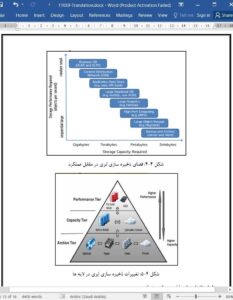Abstract
Designing storage architectures for emerging data-intensive applications presents several challenges and opportunities. Tackling these problems requires a combination of architectural optimizations to the storage devices and layers of the memory/storage hierarchy as well as hardware/software techniques to manage the flow of data between the cores and storage. As we move deeper into an era in which data is a first-class citizen in architecture design, optimizing the storage architecture will become more important. Cloud Storage Architecture is major topic in now a day because the data usage and the storage capacity are increased double year by year. So that some of the major companies are mainly concentrated on demand storage option like cloud storage. The existing cloud storage providers are mainly concentrated on performance, cost issues and multiple storage options.
Introduction
Cloud computing data centers are modeled upon a simple design-for-failure infrastructure. They use low-cost, purposebuilt, scalable solutions, including servers, storage systems and networking products, while still utilizing standard delivery models and massive economies of scale. Cloud computing data centers, however, do not purchase off-the-shelf systems designed for the traditional mass-IT market. These products are too expensive and include features that do not meet the cloud’s unique data center environment and application requirements.
CONCLUSION
Cloud Storage with a great deal of promise, aren’t designed to be high performing file systems but rather extremely scalable, easy to manage storage systems. They use a different approach to data resiliency, Redundant array of inexpensive nodes, coupled with object based or object-like file systems and data replication (multiple copies of the data), to create a very scalable storage system. Designing storage architectures for emerging data-intensive applications presents several challenges and opportunities. Tackling these problems requires a combination of architectural optimizations to the storage devices and layers of the memory/storage hierarchy as well as hardware/software techniques to manage the flow of data between the cores and storage. While there are issues of non-uniformity across cloud vendors there is a requirement to provide uniform user interfaces and seamless integration with the mainstream desktop and server computing. Moreover, since a cloud infrastructure is a distributed system, storage facilities may be designed like the distributed file system.











